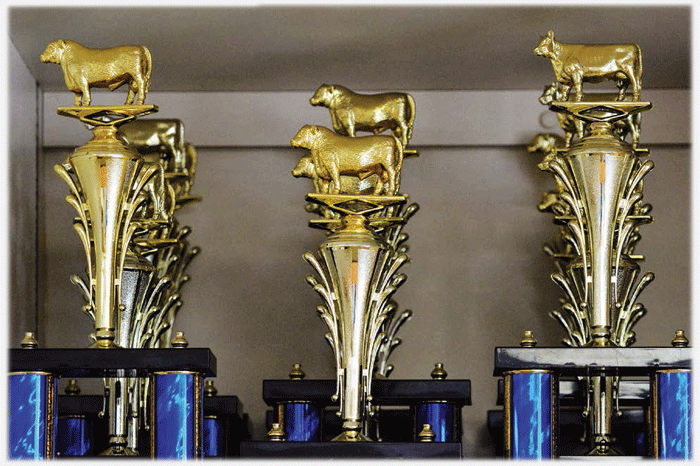| What participants learned at the Polk County Youth Fair’s Commercial Steer Show |
EVERY YEAR at the Polk County Youth Fair, local youth, FFA members, and 4-H Club students alike have a unique, hands-on learning opportunity. Each youth begins a project in which they raise livestock or horticulture, and then publicly shows the “fruits of their labor” to friends, family, judges, and potential buyers at the fair. During this time-honored tradition, one of the main events is the Commercial Steer Show.
The Commercial Steer Show is divided into two divisions; the junior division is for young people ages eight to 13 years old, and the senior division is for teenagers from 14-18 years old. First-place winners in each division receive a $100 cash prize, second-place winners receive $50, and third-place winners receive $25. But the youth who participate in these contests gain far more than the cash prize — they gain valuable knowledge of running a business, leadership, responsibility, and of course, the beef industry.
The steer show participants must keep detailed record books of their project; they are responsible for feeding, deworming, providing clean water, providing a pen, washing, and showing the steer. The fair requires that the participants adhere to very strict regulations regarding the care of the animals. Some participants just show the steer, some network with other members or ranchers to raise a small herd of cattle, and some even have families with cattle operations. By talking to ranchers and other members of the community, the youth can network and get a better idea of the genetic qualities that yield the best results for shows. Diane Sharp, a local 4-H club leader says, “Several of our members have made lifelong friendships with beef industry producers, and have been able to get advice on genetics to help them advance their breed lines. These families love to see our youth step up to learn and keep the beef industry going.” Sharp’s daughter has shown for many years and even won two grand championships at the Florida State Fair.
It’s not just about the competition, however. The steer from these shows are sent to production and yield quality beef. Show participants are not only learning how to properly feed and care for an animal, but also learning all about the beef industry, as well as the value of producing a consumable product. “They have to know how to select a quality animal at a fair price, analyze feed to ensure they are providing the quality nutrients needed to maximize their animals growth, and finish while being cost effective, keeping the bottom line in mind,” explains Sharp.
Both the young participants and consumers benefit from these shows. Sharp points out that as a leader, she wants to focus more on educating her club members. She hopes to hold a workshop for the youth to learn how to explain the importance of why the rancher and/or buyer should purchase from them at a show.
CREDITS
story by JULIE GMITTER
photo by TOM HAGERTY

